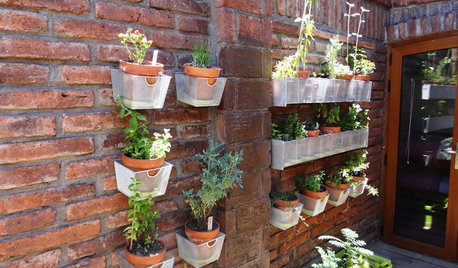Something Eating Basil and Spinach
rrweather
14 years ago
Related Stories

SUMMER GARDENINGHow to Grow Basil
Bright color, quick growth and endless uses for cooking make this summer annual a winner in the garden or a pot
Full Story
EDIBLE GARDENSHouzz Call: Where Are the Craziest Places You Grow Edibles?
Basil in a bathtub, spinach stacked up a wall ... If your edibles occupy an odd spot, we’d like to know
Full Story
HEALTHY HOME12 Ways to Set Up Your Kitchen for Healthy Eating
Making smart food choices is easier when your kitchen is part of your support team
Full Story
KITCHEN DESIGN16 Scrumptious Eat-In Kitchens and What They Want You to Serve
Whether apple-pie cheerful or champagne sophisticated, these eat-in kitchens offer ideas to salivate over
Full Story
MOST POPULARHow to Start a Cool-Season Vegetable Garden
Late summer and late winter are good times to plan and plant cool-season crops like salad greens, spinach, beets, carrots and peas
Full Story
ENTERTAININGHow to Throw an End-of-Summer Moroccan Mixology Party
An event planner creates an evening of interactive cocktail-making fun for his guests
Full Story
GARDENING GUIDESTop 12 Summer-Blooming Perennials for Deer-Resistant Drama
Can you have garden color, fragrance and exciting foliage with hungry deer afoot? These beauties say yes
Full Story
EDIBLE GARDENSHow to Grow Your Own Sweet Summer Crops
This guide will help any gardener get started on growing the freshest warm-season veggies and berries for summer
Full Story
URBAN GARDENSExperiments Aplenty Fill Vancouver Edible Garden
Lush and brimming with test landscape plantings, a Canadian garden appeals to the eye and the palate
Full Story
CONTAINER GARDENS7 Deer-Resistant Flowers for Your Summer Containers
Grow these as protection for edibles or just for their colorful beauty — deer might not like them, but everyone else will
Full Story






ksrogers
rhizo_1 (North AL) zone 7
Related Discussions
Something eating lettuce but not spinach?
Q
Something Eating My Basil
Q
PIC-something is eating my celery, basil, etc.... please help
Q
Spinach, swiss chard - something eating holes in leaves
Q
rrweatherOriginal Author
ksrogers
rhizo_1 (North AL) zone 7
ksrogers
tn_veggie_gardner
rhizo_1 (North AL) zone 7
ksrogers
rhizo_1 (North AL) zone 7
ksrogers
dianelydonrcsdk12org
joesnocap_optonline_net